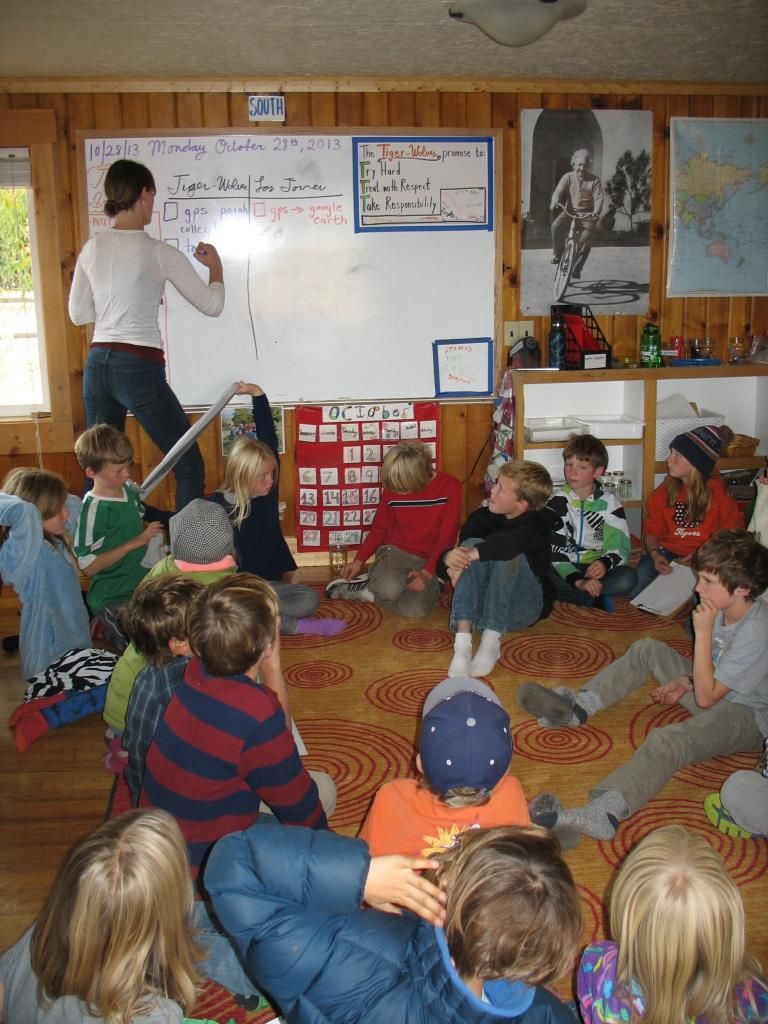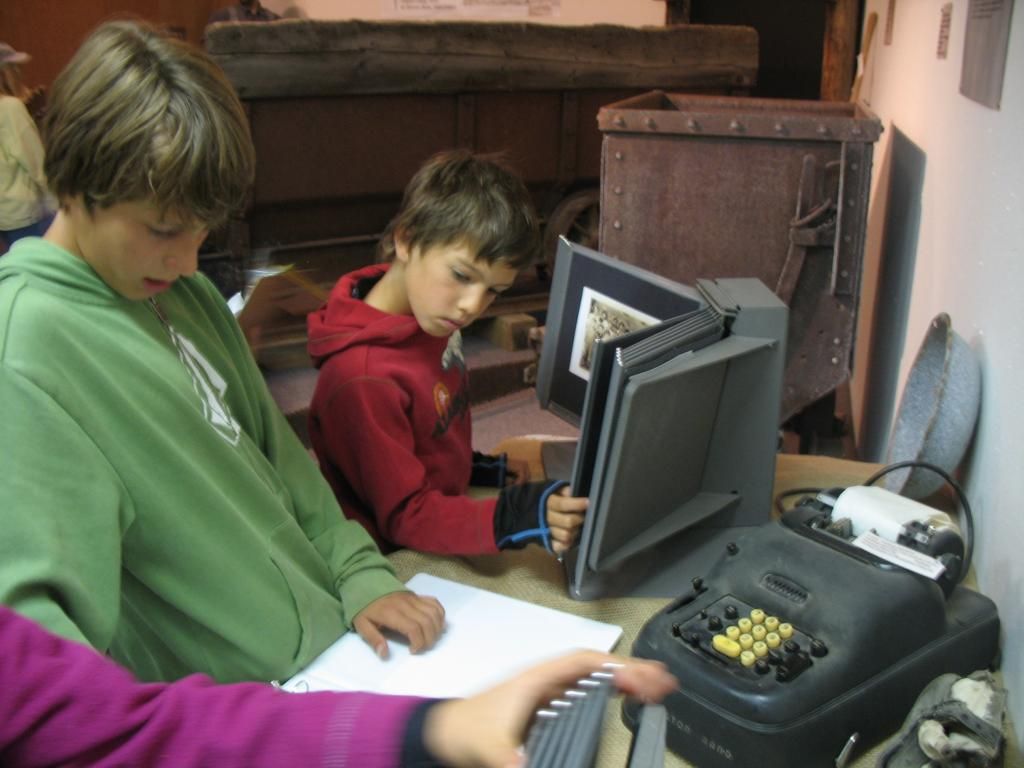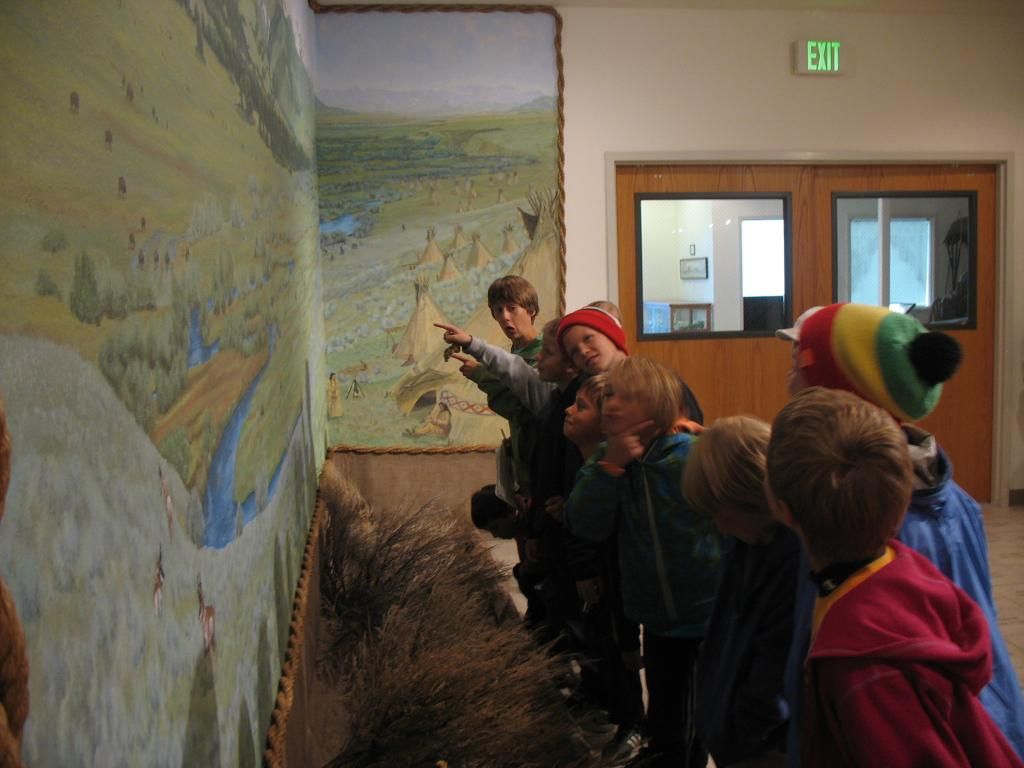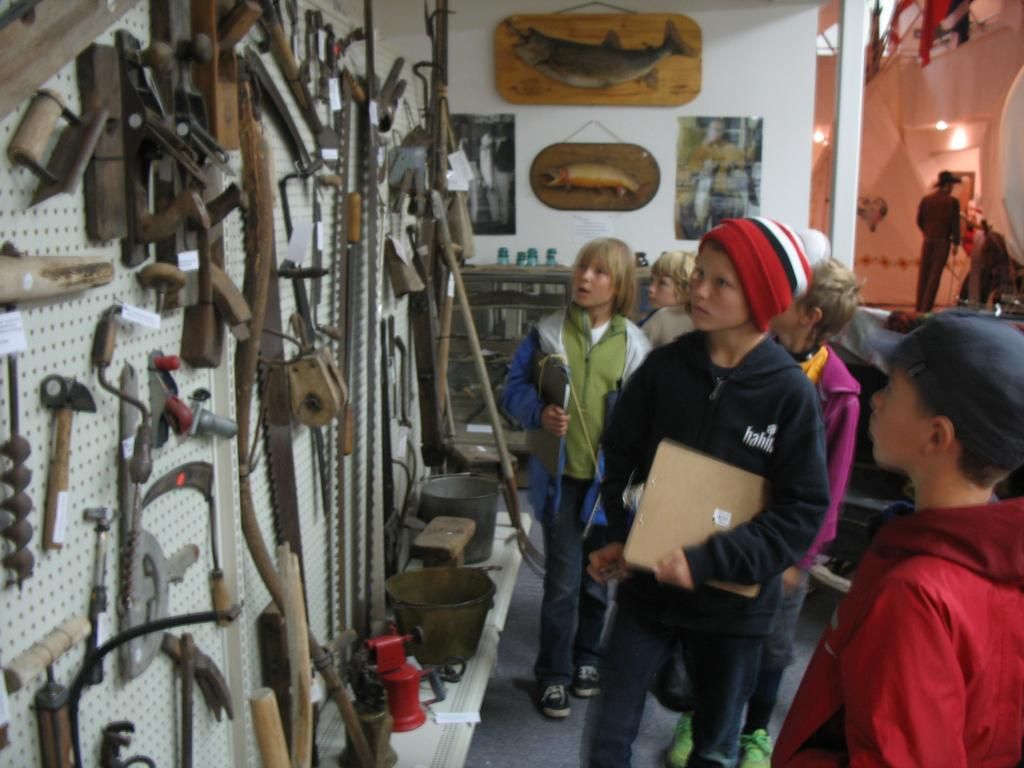· Driving Question: What would a gaper want to know about Teton Valley Idaho?
· Definition of a Gaper Guide from www.gaperguide.com: gap•er (gā'pər), n. 1. Person who gapes in openmouthed surprise or wonder. 2. One who stops and stares at something and says, “What is that?”Our electronic audio guide tells "gapers" about the parks as they drive, it is a gaper-guide.
· Follow up questions: What are the most important historic landmarks around the valley? What are the most important historic events that occured in Teton Valley? Why does Teton Valley look like it does today? Where would we want people to stop to find out about the geology of Teton Valley? What is a GPS coordinate?
· Description of project: Students will create audio files that will be linked to GPS coordinates. These audio files will give historic and geologic information about Teton Valley, Idaho.
Wrapping up the Gaper Guide Project
Last week, students finished their informational paragraphs. This week, we will help the Tiger Wolves read the paragraphs and record the reading onto garage band. With the recordings and photos, the Tiger Wolves will then creat a video that the Toros will upload into Google Earth with the GPS coordinates creating the final tour of the Gaper Guide Project.
This Week
After reviewing what students have learned about US history, they have blown me away with the amount of information that has sunk in from watching the amazing TV series - The Story of US. This week, we will try to wrap up our mini-project on US history in an attempt to wrap up a succinct understanding of the broader / more important concepts from US History. We will continue to watch the movie, play games, and have discussions throughout the week. Then, after Thanksgiving break, we will come back and begin our molecular gastronomy project with full steam!
Aside from more paragraph editing, students began to learn how to set up a tour in Google Earth. Although these were basic steps, it was a necessary introduction to the program that will allow us to help the Tiger Wolves input GPS coordinates and photos from the historic and geologic landmarks around Teton Valley. Students got very excited to tour Teton Valley just in Google Earth!
Unfortunately, our field trip to the Jackson Hole Historic Museum was postponed until next week due to weather. This did allow us more time to work with Google Earth and get closer to finishing our paragraphs. It also allowed us more time to finish our 'Story of the United States' that students are using to begin their faint outline/understanding of US history.
On Monday, students will get their first introduction to atoms, elements, and molecules as we rev up for our next project. We will also plan our the product and driving question for the project.
Today we debriefed Friday's trip to the museum. Students agreed that it was a pretty great.
"Yea, I think we learned a lot in a really short time. It was a really good museum." - Sammy
Students answered the driving question very thoroughly in the notes they took and shared many other insightful facts from the museum.
Gaper Guide Project Debrief:
We had a good discussion about the state of our project. Currently, all students understand that the project will wrap up it's first phase when students are finished with the final drafts of their informational paragraphs. However, students also voted to continue the project so that they could participate in the creation of the final product of the project - a tour on google earth. Students are very keen on learning how to use google earth to create a tour of the historic and geologic landmarks of Teton Valley.
Since students are also extremely excited to begin the next project, we decided to dovetail into the molecular gastronomy project as soon as the paragraphs are completed. We will learn how to use google earth while editing paragraphs and then while we are waiting for the Tiger Wolves to complete the next phase, we will begin our Molecular Gastronomy Project.
In the afternoon, we went down to the Tiger Wolves' classroom and shared our roominations. Students read the rough drafts of their informational paragraphs to their partners and began to brainstorm which locations in the valley would be suitable for the information gathered. We ended our meeting by writing two to do lists for each class to help us finish our project.

On Friday we drove to Pinedale, Wyoming to visit the Museum of the Mountain Man. It was a glorious field trip!
On the way there and back in the van, students listened to a book about the journey of Lewis and Clark from the perspective of the newfounland dog who accompanied them on their journey.
When we arrived, students perused the museum to answer the driving question of our visit:
How did mountain men make westward expansion possible?
They discovered that a fashion trend in Europe was what actually drove westward expansion before the gold rush. The top hat, mad of beaver fur, motivated hundreds of intrepid fur trappers to come out west to trap beaver and make their fortunes. The men who stayed out west rather than migrating back to the big cities became known as mountain men. Mountain men explored and mapped the west. Without them and their knowledge, the country would have taken much longer to grow into what we know it as today.
Once upon a time, colonists came over from Europe to settle in 'New America'... clashes with the natives... 13 colonies... revolution!...independence...westward expansion...industrial revolution...civil war...more expansion...
... and as they listened to the story of their country's history the students drew pictures...
they drew pictures of battles
and treatises
and inventions
and momentous occasions.
Creating an illustrated story book covering a smattering of important events in the US is one of the activities students began this week in their efforts to understand more thoroughly the history of United States of America. Students also realized that their desire to know all of US history was maybe a little ambitious but interest still holds and we will continue to read and discuss as much as possible until this project comes to an end.
This week students continued to learn about US History. We continue to study US History for this project to help give students a context for the history of Teton Valley that they are researching for the projects. For example, it is difficult for students to understand why a coal mine would suddenly become such a big deal without understanding the importance of the first industrial revolution when western societies changed from hand to machine production methods and from fuels such as wood to coal as it was a more efficient way to fuel new steam powered machines. Reading and talking about the most important periods in US History as well as adding to our timeline is helping students answer imortant questions that continually arise while they research like: Why weren't there slaves in Teton Valley? Did the settlers send representatives to the US Government? Why was a train here such a big deal?
Although we took a little bit of a break from our Gaper Guide Project to participate in activities that related to the Harvest Fest, students still accomplished quite a bit. Students began the week with an earth science quiz that covered rock types, the rock cycle, and the layers of the earth. We then transitioned into attempting to give students a background of the history of the United States to help give context to the smaller historic events of Teton Valley that they are studying for the project.
We decided to make a timeline around the classroom to help students understand the relationships between major events in US history. Grandparents, on the day of the Harvest Fest, came into our classroom and helped students decide which events belong on the timeline. They also related stories about many of those events to the students giving students a more intimate picture of what they will study.
Students also had a little bit of time this week to continue their research and begin their outlines for their informational paragraphs.
This students got close to finishing up their research of their geologic and historic topics for the Gaper Guide project.
We also studied the layers of the earth this week to help students understand more fully why the earth and Teton Valley look the way it does. Students built models of the layers of the earth and gave brief presentations to explain their models at the end of the week.
Today was packed full of learning! First, Los Toros gave presentation to the Tiger Wolves explaining how they 'replicated' the parts of the rock cycle with a sugar cube. The was an incredible opportunity for Los Toros to demonstrate not only recent knowledge of the rock cycle but what they know about presenting and how to make a good poster. Students created a rubric outlining all of the topics they thought they should be judged by. The rubrics were filled out by Natasha and sent home at the end of the day.
After the presentations were given, both classes separated into their multi-age research groups and we headed off to the Teton Valley Museum in Driggs. There, students gathered a wealth of information on their historic topics for the project. Students also learned about many other topics, asked great questions, and proposed new topics to add to the gaper guide. Perhaps the most interesting part of the visit for the group I traveled through the museum with was the town of Sam. Sam, was a mining town located down Pack Saddle road. It was constructed in the early 1900s due to the large demand for coal coming from three mines in the valley. With little to no evidence of its existence today, we got very excited to go and look for the reminants of a town in a part of the valley that most of us have traveled through, but never fully appreciated.
 |
 |
 |
AND THEN!!!... We came back to the classroom and grew crystals! (Sorry, I was so engrossed in the experiments that I forgot to take pictures!) But we'll take pictures as the crystals are growing and let you know what the student's observations are.
Using cubes of sugar, students demonstrated the processes of the rock cycle. As they transformed one cube of sugar 'one rock type' into another, they documented the changes by taking photos along the way. Students then took all of the photos and competed to see who demonstrated the 'best' rock cycle.
· This week students began the researching the following topics:
|
History |
Geology |
|
Native American Tribes that lived in the valley |
Glaciers / Glacial Erratics |
|
Rendesvous |
Uplift / tetonic plates |
|
Trappers |
lakes / rivers |
|
Ranchers |
sinkhole |
|
Coal/Gold Mines |
volcano |
|
Damn |
types of rocks around valley that describe geologic history |
|
Train |
volcano |
|
Explorers |
fossils |
· We also did a variety of activites to help students learn about the three types of rock, the difference between a rock and a mineral, and the rock cycle.
· Below, students are playing a game in which they had to place key terms defining the three different types of rock into the appropriate category.
· I also asked students to bring in rocks from around the valley and/or their own personal rock collections so we could identify them. Students had to use their slueth skills to decide what types of rock we have in our classroom to label them and help piece together the geologic history of Teton Valley.
· ![]() USA- McREL- Mid-continent Research for Education and Learning Content Knowledge Standards and Benchmarks for K-12 (2012)
USA- McREL- Mid-continent Research for Education and Learning Content Knowledge Standards and Benchmarks for K-12 (2012)
· ![]() Subject: Science
Subject: Science
· ![]() Strand:
Strand:
· Earth and Space Sciences
· ![]() Standard:
Standard:
· 2. Understands Earth's composition and structure
· ![]() Level:
Level:
· Level III (Grades 6-8)
· Benchmark:
· 5. Knows processes involved in the rock cycle (e.g., old rocks at the surface gradually weather and form sediments that are buried, then compacted, heated, and often recrystallized into new rock; this new rock is eventually brought to the surface by the forces that drive plate motions, and the rock cycle continues) A
· Benchmark:
6. Knows that sedimentary, igneous, and metamorphic rocks contain evidence of the minerals, temperatures, and forces that created them
We kicked our week off with an expedition to Grand Teton National Park on Monday to get some ideas for our first project. First, we stopped at the Gaper Guide office to pick up these nifty gaper units that told us interesting facts as we drove by important landmarks. Once in the park, we stopped at the visitor center so students could research facts that they were then going to find out in the park for their photo scavenger hunt. The goal of the scavenger hunt was to take a photo of your group in front of a historic or geologic landmark. The group also had to have a fact about the thing they were standing in front of written on a whiteboard that they held up for the photo. Students worked in multi class pairs (one Los Toro to one or two Tiger-Wolves). Although we didn't have a lot of time to complete our photo scavenger hunt (traffic was horrible!), the kids found some interesting sites and took some great pictures!
It turns out, that our first stop to pick up Gaper Guides helped direct our project. Kids wondered why the gaper guide didn't have any facts about Teton Valley Idaho. We then started brainstorming, with the Tiger Wolves, what information we would include in our Idaho Gaper Guide. All of a sudden, it looks like students are going to work in the same partners they had for the photo scavenger hunt to compile a list of historic and geologic facts about Teton Valley that they will link to GPS coordinates. After we collect and record all of our information, we will submit it to Gaper Guide and see if they will upload it into their units!